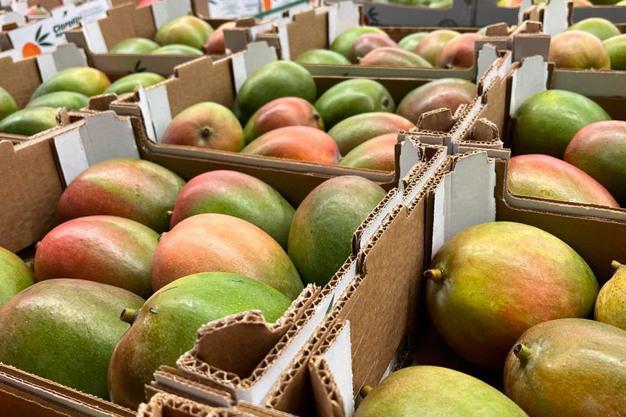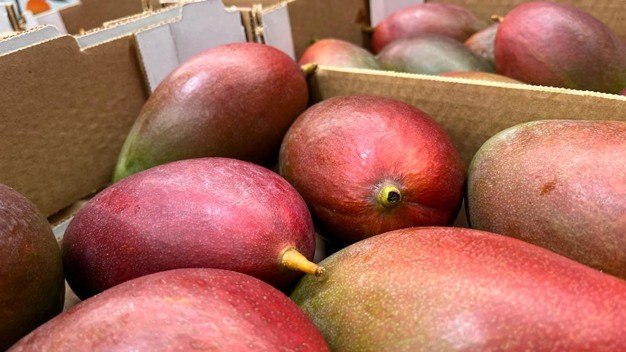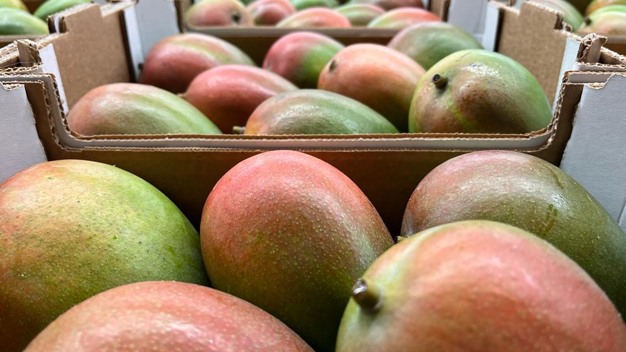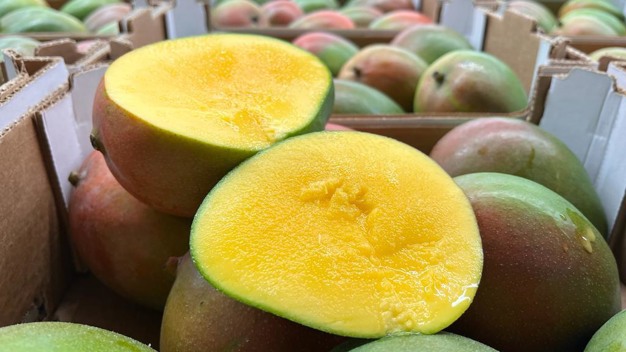"Free market mango prices were sky-high," begins Marcel van Rooijen of Trofi – a Dutch company that imports exotics - in early October. "Brazilian mangoes entered a fairly empty market because the drought and heat accelerated the Spanish season. The market can, thus, not meet demand right now."

Marcel thinks it will remain challenging to get sufficient mango supplies this year. "Peru's early harvest isn't continuing, so a reasonable shortage is expected, especially in the early crop. Peruvian crop estimates are lower, too, due to flowering and fruit setting problems," he says. The first Peruvian mangoes are normally shipped around the end of October for arrival in mid-November, now Marcel expects them to arrive on the market early in January 2024.
No alternatives
He thinks the shortages will drive up free market prices, though he also notes that the situation is making it trickier to fill programs. "It's going to struggle to ensure fruit is available." Again, because mango production in countries like Ecuador and the Ivory Coast are also failing. "There are no alternatives, so there will be a gap between the last Brazilian mangoes and the first ones from Peru. It will be quite challenging to make sure everything keeps going more or less normally; it’s going to be very exciting," Marcel says.

He blames El Niño – warming oceans along the equator in the eastern Pacific are causing weather changes in large parts of the world - for those disappointing crops. "That's going to cause more problems across the globe. That started early this year, with severe weather at the start of the avocado harvest. El Niño triggered a kind of wave of changing production patterns. That's evident in mangoes, too."
Ample opportunities
Though the market tightness will make things tricky for a while, Marcel still sees there are generally ample opportunities for mango sales. "This product still offers a fair amount of growth," he says. Yet, consumers give up mangoes when prices are too high. "There's a recent increasing trend toward ready-to-eat. But that has a magic price; if that rises too much per piece, shoppers abandon mangoes. That limits your options," he explains.

In seeking cost reduction, Van Rooijen sees plenty of possibilities to keep mango prices within margins. There are still gains to be made in logistics, the most significant cost item. At least decreased freight costs help. "A year ago we were bumping up against extremely high freight rates. Fortunately we don't have that this year. That gives us slightly more room to absorb setbacks."
Ready-to-eat
You can use those released margins to, say, ripen the fruit; something Marcel notices is an increasingly important aspect for people. "If consumers buy a nice mango in the store, they'll do so again next week. But if you must wait two to three weeks for that fruit to ripen in your fruit bowl and you might still have to throw it away, you won't buy mangoes anymore. Once you know how to trigger shoppers and ensure there are good products, they'll keep returning. That's our future," he reckons. Demand for ready-to-eat mangoes is thus climbing, and most of the mangoes Trofi now trades are ripened, Marcel points out. "Other countries that until now were trading purely standard mangoes are also slowly switching to ready-to-eat," he adds.

Listening to the market
He notes that consumer needs vary per country. "You must listen carefully to what the market wants." Here, Marcel distinguishes between different European regions. "Southern Europeans, for instance, like beautifully colored mangoes. But in central and northern Europe, they consider flavor and flesh-coloring more," he concludes. Trofi markets mangoes throughout Europe and sees that while Eastern European countries still offer plenty of growth potential, there is also growth, albeit far less, in Northern and Central Europe.
For more information:
Marcel van Rooijen Trofi
Trofi
Harnaschdreef 10
2635 BT Den Hoorn
T:+31 (0)180 330825
marcel_van_rooijen@trofi.nl
www.trofi.nl
